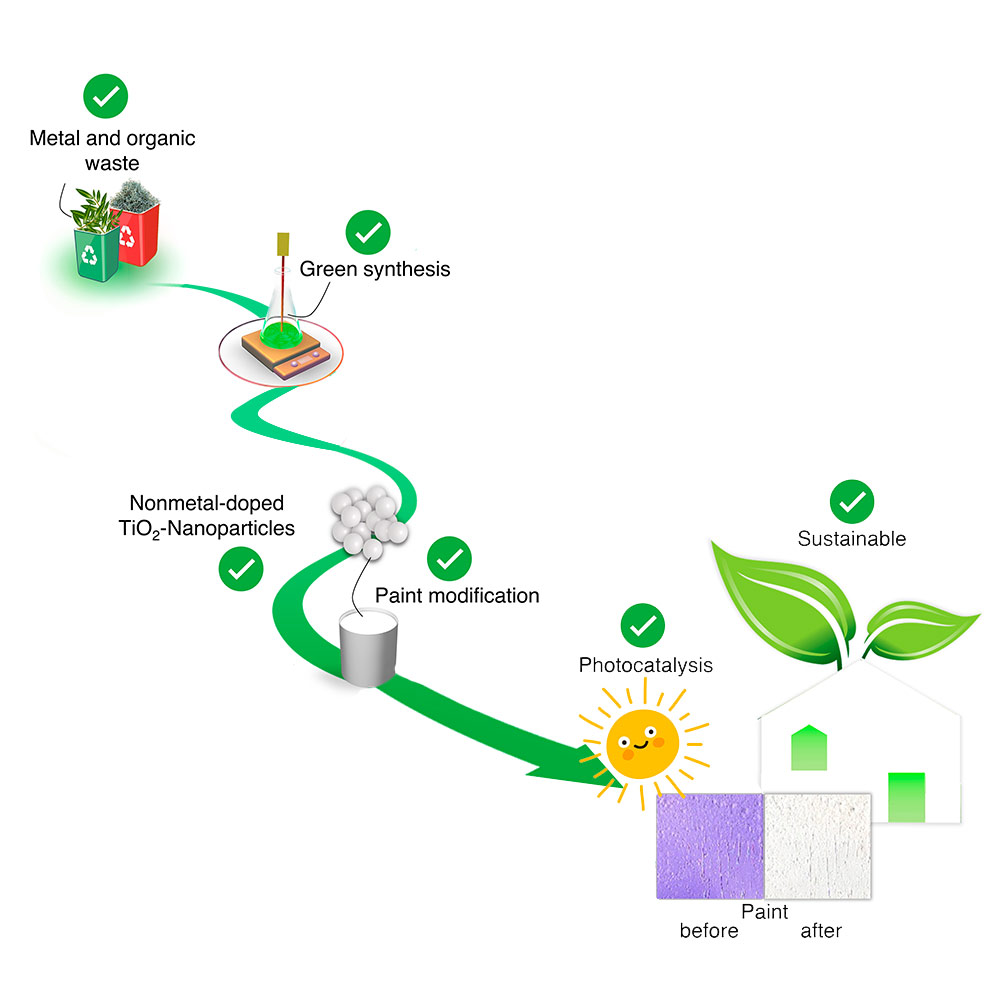Lime, often considered one of the earliest examples of “smart” materials, has been used for over 7,500 years, dating back to its application on walls and floors in ancient Jordan. Recognized for its antiseptic qualities and its ability to cool down interiors through its reflective capabilities, lime sets a historical precedent for exploring paints with remarkable features. Modern times have seen the development of innovative paints, such as one that can cool a building, potentially reducing energy consumption by up to 60%. In this tradition, a lab in Vienna has now introduced a sustainable, self-cleaning paint that additionally cleanses the air.
What will I read in this article?
Innovative self-cleaning paint through nanotechnology
This newly developed paint captures and breaks down pollutants using ultraviolet light. This chemical reaction neutralizes the toxins, causing them to fragment and release from the paint’s applied surface. The Material Chemistry Institute at the University of Vienna has honed in on the properties of titanium oxide nanoparticles to facilitate this effect. Prior to this, utilizing titanium oxide in self-cleaning paints posed challenges, including diminished durability and a tendency for the paint to crack, not to mention the necessity for intense ultraviolet light to initiate the photocatalytic reaction.
By integrating phosphorus, nitrogen, and carbon atoms into the nanoparticles, the researchers have altered the wavelength required for activation, allowing sunlight to suffice. The enhanced formula, which can complement any self-cleaning paint on the market, boasts a 96% effectiveness in eradicating toxic particles. The experiment utilized materials sourced from recycled metal and organic waste, with titanium oxide derived from scrap metal and organic compounds extracted from olive leaves.

The research team has yet to confirm whether this innovative additive will be compatible across all color spectrums or limited to specific hues, such as white. Ongoing testing aims at eventual commercial availability, promising a material that not only purifies air and self-cleans but also outlasts traditional paint options in durability.
Understanding photocatalytic paint
Photocatalytic paint is at the forefront of coating technology, offering both self-cleaning and air decontaminating solutions. This innovation is grounded in photocatalysis, a process where sunlight activates a catalyst (commonly titanium dioxide) within the paint, breaking down both organic and inorganic matter on the surface and in the air.
Key benefits include:
- Self-Cleaning: Facilitates the breakdown of surface dirt and organic matter, simplifying maintenance through natural rain or minimal rinsing.
- Air Purification: Helps decompose air pollutants like nitrogen oxides and volatile organic compounds, enhancing air quality and combating “sick building syndrome.”
- Anti-Microbial: Prevents the proliferation of mold, fungi, and bacteria by destroying these organisms on surfaces.
- Enhanced Durability: The photocatalytic effect also shields the surface from UV degradation and environmental wear, extending the paint’s lifespan.
Should the Vienna team’s breakthroughs come to fruition, the future could see cities becoming cleaner and more sustainable.
Source:
Images:



